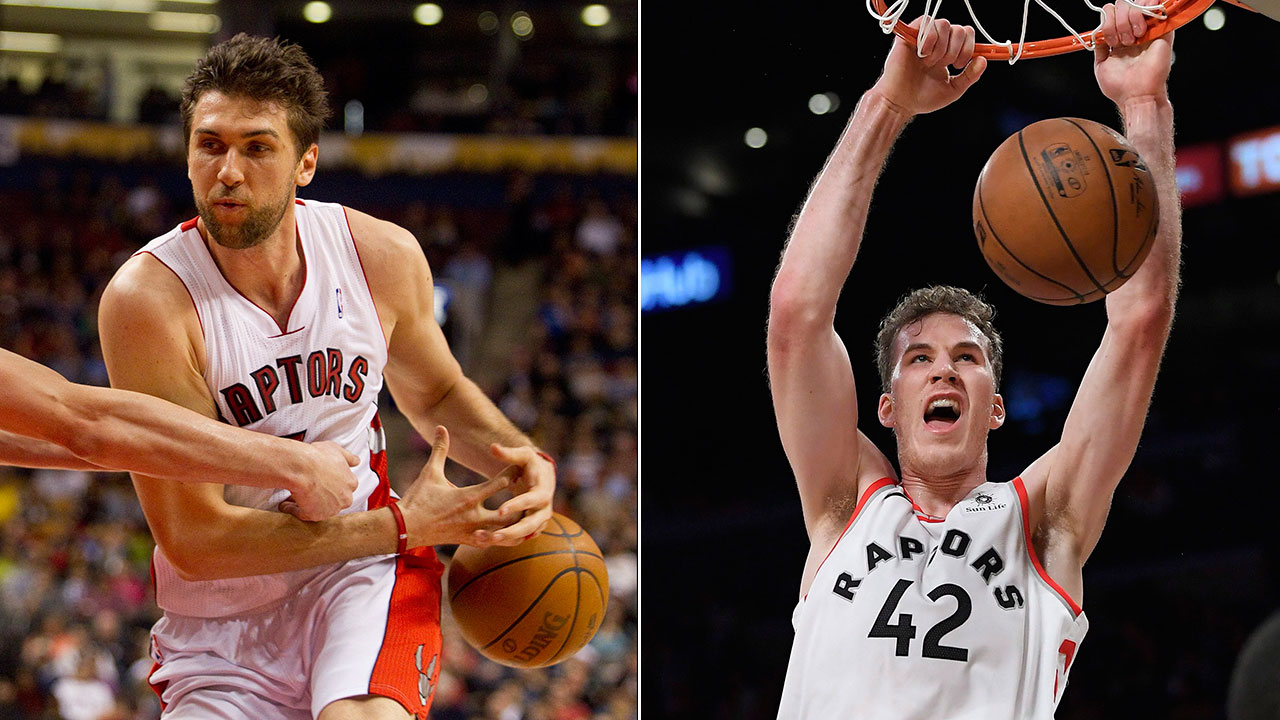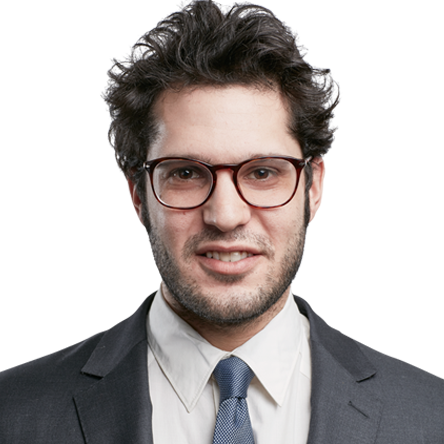This article was originally published on Dec. 12, 2017 and has been updated in the wake of the Kawhi Leonard trade
Trade trees are often meant to illustrate how one transaction can signal a wave of subsequent moves that reverberate in countless ways for years to come.
This is not one of those trees.
The Andrea Bargnani trade in 2013 didn’t yield a handful of future Raptors, or grow countless branches as the years went on like, say, the infamous Vince Carter trade did. But Masai Ujiri’s first big move at the helm of the Raptors helped distance the team from a polarizing figure, and landed a player who could blossom into a future cornerstone.
THE TRADE:
New York Knicks receive: Andrea Bargnani
Toronto Raptors receive: Steve Novak, Marcus Camby, Quentin Richardson, a first-round pick, two second-round picks
THE BACKSTORY:
How the Raps ended with the first overall pick in 2006…
Let’s go back in time for a moment. The 2004-05 Raptors season was marred by the single most lopsided trade in team history. After averaging a career-low 15.9 points, third on the team (behind Jalen Rose and Chris Bosh, and just barely ahead of Rafer Alston), Vince Carter, the face of the franchise, was dealt to the New Jersey Nets in exchange for Eric Williams, Aaron Williams, 34 year-old Alonzo Mourning, and two first-round picks (one used to draft Joey Graham in ’05, the other eventually traded to the Knicks along with Jalen Rose). There are plenty of thorn-filled branches on this trade tree, which you can read more about here.
For better or worse, it signalled a new direction for the Raptors, who moved forward around budding star, 20 year-old big man Chris Bosh.
Then-Raptors GM Rob Babcock had two first-rounders at his disposal in the 2005 draft and selected the aforementioned Graham along with former UConn standout and NCAA champion Charlie Villanueva. But the team wasn’t ready to commit to a true rebuild/youth movement.
With Bosh and Rose leading the way, surrounded by a blend of young talent and established veterans like Morris Peterson and newly-acquired Mike James— just one full season removed from winning a title as the Detroit Pistons backup point guard— few gave this mish-mashed roster a chance to make the playoffs heading into the 2005-06 season. A convincing pre-season loss to an Israeli pro team only validated concerns that the Raps were in trouble.
It’s hard to imagine a season getting off to a worse start, and the Raptors infamously opened the ’05-06 campaign on a nine-game losing streak, going 1-15 to start the year. It was the beginning of the end.
There were bright spots— Bosh was coming into his own as an all-star talent— but this was the same year that James went on the greatest (read: most blatant) contract run in sports history, finishing second on the Raps in points and leading the team in field goal attempts. Rose was eventually moved to New York late in the year in exchange for former Raptor Antonio Davis, who only appeared in eight games.
In February Babcock was replaced by Bryan Colangelo, architect of the Steve Nash-led Seven Seconds or Less Phoenix Suns teams.
Still, Toronto was a laughing stock and finished 27-55, the fourth-worst record in the East. They couldn’t even tank right.
Enter: Bargnani
The Raps entered the 2006 draft lottery with the fifth-best shot at getting the first overall pick. For a team looking for a fresh start, they were gifted the best head-start possible when, with Colangelo in attendance, Toronto leap-frogged all the way to No. 1.
In almost any other year and the Raptors would be in a position to land a franchise-type player to pair with Bosh. But the 2006 draft class was especially weak, an unfortunate but strangely fitting reality that lined up with how things had been going for the club at the time.
Texas big man LaMarcus Aldridge, a fellow left-handed power forward like Bosh, was the consensus top player, with LSU’s Tyrus Thomas and Gonzaga’s Adam Morrison among the prospects atop most draft boards.
But as draft day neared, a relatively unknown Italian teenager was making noise. At seven-feet tall with a remarkably smooth shooting stroke and range that extended beyond the three-point line, Bargnani was certainly an intriguing prospect. He was the EuroLeague’s reigning “Rising Star,” awarded to the top player under the age of 22. At 20 years of age, he averaged 12 points per game in the top-level Italian league and helped his team, Bennetton Treviso, win an title.
“There hasn’t been a draft in recent memory with more speculation about who the No. 1 pick will be,” read an article on NBA.com ahead of the ’06 draft.
With an NBA-ready three-point stroke, championship pedigree and a legit seven-foot frame, Bargnani was in the mix — the fact that Colangelo had just hired former Bennetton Treviso GM Maurizio Gherardini to his staff only helped — and by the time the draft neared, he was pegged as the consensus No. 1.
The Bargnani Years
The sad ending to Bargnani’s Toronto tenure seems to have overshadowed what was a promising early career with the Raptors. As a 21 year-old rookie he scored in double figures (11.6 points) in 25 minutes per game off the bench, and hit 37 per cent of his four three-point attempts per game.
He also flashed natural skills beyond shooting, delivering the best pass in Raptors history (forgotten after Bosh couldn’t finish the lay-in)
The Raptors made the playoffs that season, and although they lost a six-game series to Carter and the Nets, Bargnani stepped up, averaging 17 points in 40 minutes per game over his final three post-season games.
He improved each year, and after Bosh signed with the Miami Heat in 2010, Bargnani led the Raptors in scoring at 21.4 points per game. But without a true star, and on a roster that cycled through a stunning 22 players that season, the Raptors were again in the NBA’s basement.
Today, a player like Bargnani, whose offensive weaponry would be better utilized and poor play on the other end of the floor could be better masked, could thrive in a way he wasn’t able to in a league that had yet to embrace the virtues of a three-point shooting big man.
But Bargnani either wasn’t interested, or able, to make strides in his overall game as the years went on.
Injuries mounted up (he never played 82 games in his career and averaged just 33 games per season over his last two years in Toronto) and internally there were questions about his drive—Bargnani had all the talent in the world, but didn’t exactly seem hell-bent to maximize it in the way that separates the best in the game.
He wasn’t the disaster he’s made out to be, but by the time the 2010s rolled around, it was clear that Bargnani was never going to be the player we thought he might become back in ’06.
When new GM Masai Ujiri took the reigns of a Raptors roster starring a young DeMar DeRozan in 2013, he knew the 27 year-old Italian wasn’t a part of his future plans.
The aftermath
In his first move, Ujiri traded Bargnani to the Knicks in exchange for Steve Novak, Marcus Camby, Quentin Richardson, a 2016 first round pick, and two second round picks (2014, 2017). Camby and Richardson were both waived that off-season, and the trade amounted to a salary dump, freeing the team of the $22 million owed to Bargnani over the next two seasons.
What were the Knicks thinking?
Great question. Sure, Bargnani was only a few years removed from averaging 20 points per game, but he hadn’t been able to stay on the floor, his confidence during games seemed shakier than ever and his shot— his best attribute— suffered as a result, having dropped below the 30 per cent mark from deep.
His scoring numbers rose slightly in New York, where he spent two seasons, but again injuries remained a problem, an issue that surely coincided with his poor conditioning. On the whole, he just seemed… broken.
Once his contract expired with the Knicks in 2015, he signed a deal with the neighbouring Brooklyn Nets, where he appeared in 46 games off the bench in 2015-16, seeing just 14 minutes of action per game. It was his last year in the NBA. In 2016 he signed with a Spanish club Baskonia, but failed to make a noticeable impact and was released after another string of injury setbacks.
It wasn’t his fault that he was chosen first, but that doesn’t change the fact that he is now remembered as one of the league’s biggest draft busts.
The picks
Novak played 10 minutes per game in his lone season in Toronto. In 2014 he and the 2017 second-rounder acquired from the Knicks were dealt to the Utah Jazz for Dionte Garrett, who was later waived. The 76ers eventually acquired that pick, and used it to draft Australian centre Jonah Bolden this past June.
The Knicks’ 2014 second round pick was used to draft Xavier Thames (2014), who was traded one day later to the Nets for cash. He hasn’t appeared in an NBA game.
Shedding Bargnani’s salary alone was a major win for Ujiri and the Raptors, helping achieve more flexibility for moves in the years to come, which included signing free agents DeMarre Carroll and Cory Joseph in 2015.
But the real coup was the 2016 first round pick, which the Knicks obviously didn’t expect to be so valuable, and ended up being the ninth overall selection.
The Raptors drafted Jakob Poeltl with the pick they got in return for Bargnani, a move that has not only helped propel the team to a killer start this season, but provided the Raps with, at best a potential cornerstone, and at worst, a player who figures to be a fixture in the starting lineup as his career progresses.
Ujiri bucked convention when he selected Poeltl in the 2016 lottery. All the talk around the NBA centred on how the league was going smaller, emphasizing the three-point shot. Plus, the team already had a centre under long-term contract in Jonas Valanciunas.
But Poeltl, 22, has proven to be an absolute gem. He runs the floor like few players his size (7-foot-1, 248 pounds), and has the instincts and the fundamental tools to dominate stretches of games on both ends of the floor.
His current per-36 minute averages in his second season of 15.6 points, 10 rebounds, and 2.2 blocks are a mere glimpse of what the future could hold. The most promising part of Poeltl’s game is his self-awareness — he knows exactly who he is as a player, a rarity among prospects, and plays his role perfectly.
He’s incredibly opportunistic around the basket, and that coupled with his soft hands has led to an effective field goal percentage of 69 per cent this season — the highest of any player in the NBA.
The Raptors young core of OG Anunoby, Delon Wright, Pascal Siakam, Fred VanVleet and Norman Powell all figure to have bright futures, but arguably none have a ceiling as high as Poeltl.
And to think it all it took was an opportune salary dump to acquire him.
UPDATE: On July 18, 2018, the Toronto Raptors pulled off a blockbuster trade, sending DeMar DeRozan, Jakob Poeltl, and a 2019 first-round pick to the San Antonio Spurs in exchange for Danny Green and 2014 Finals MVP Kawhi Leonard.
So, yes, we can now add another branch to this tree — and sit back in awe at the fact that Andrea Bargnani can now be linked to the Kawhi Leonard acquisition in what is the single most interesting trade tree in Raptors history.









